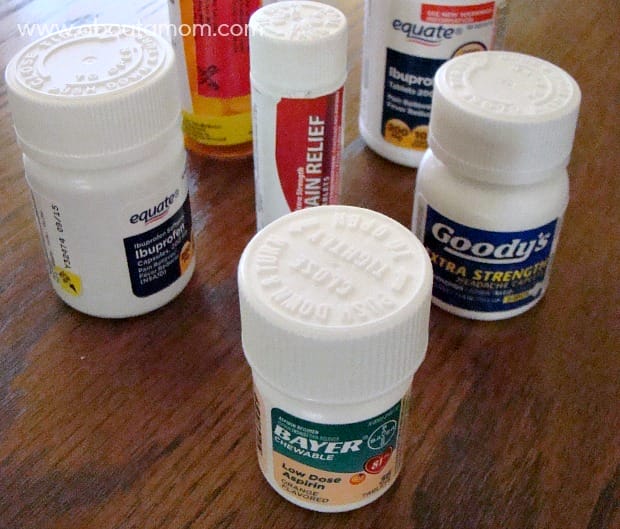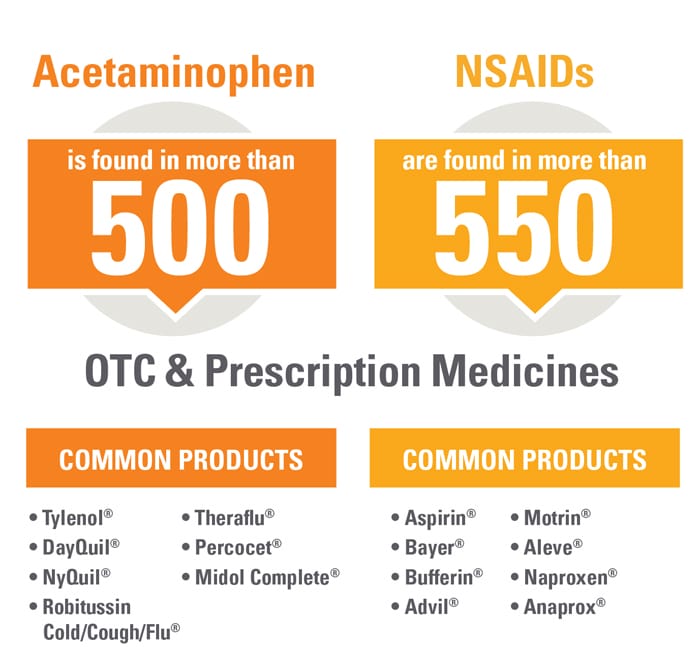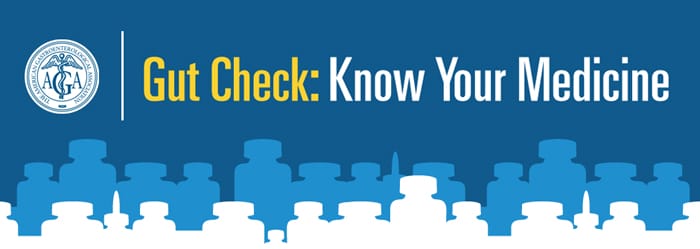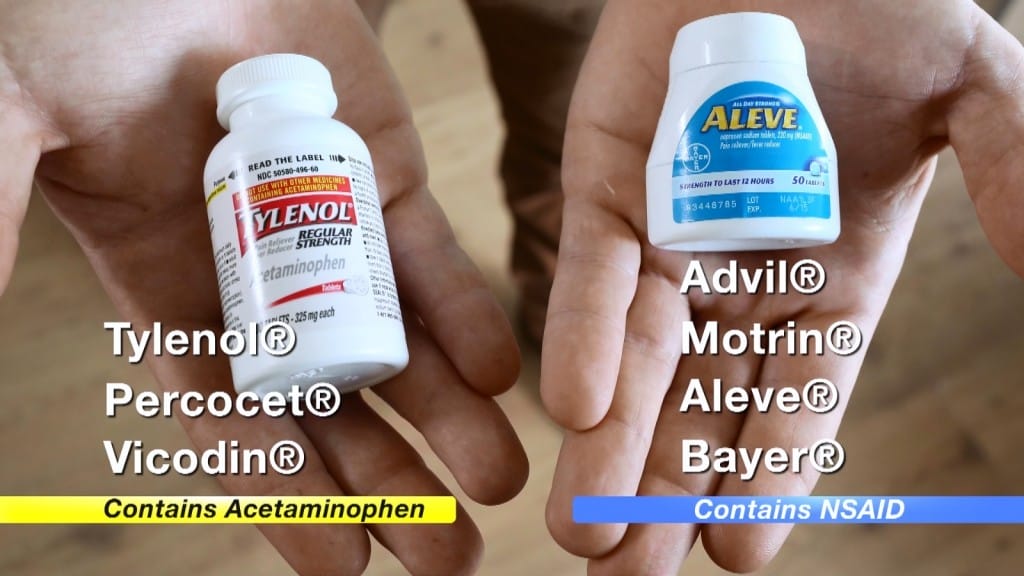I wrote this blog post while participating in a campaign by BOOMboxNetwork.com on behalf the American Gastroenterological Association and received payment for my participation. All opinions stated within are my own. Now let’s talk about OTC pain killers.
We all take pain killers and over the counter (OTC) medications from time to time. As I get older, arthritis, back pain, and other various aches and pains have reared their ugly heads. I find myself taking more and more OTC medications. I think it’s time to pause and figure out if I am taking a safe dosage of OTC medications. I have to admit that, as a chronic pain sufferer, I don’t always follow package directions when taking over the counter medications. My reasoning is usually that there are prescription strength meds with a higher dosage. A little more won’t hurt – will it? This is terribly foolish – I know. But I have a feeling there are some of you reading this who do the exact same thing.
These pain killers were from just one shelf of my medicine cabinet.
I am so glad I signed on to this campaign, because it really shed light on some of my dangerous behavior regarding OTC medications. I hope you will take the time to get your own Gut Check and read this important information about the proper use and dosage of OTC medications.
Here’s a startling wakeup call. According to the American Gastroenterological Association, it is estimated that 100,000 or more people are hospitalized and 17,000 people die every year from gastrointestinal bleeding and liver damage due to overdose or overuse of over-the-counter (OTC) pain medicine ingredients. In most cases, the simple act of reading and following medicine labels can help to prevent this serious harm.
When used correctly, OTC pain medicines can help relieve pain and reduce fever. There are thousands of generic and brand name products available that include the same active ingredients, such as: aspirin, acetaminophen, ibuprofen, and naproxen sodium. These ingredients are generally safe when taken at their recommended dose, but can become dangerous if overused or taken at higher-than-recommended doses.
Luckily the AGA is stepping in to help us all. To help adults carefully navigate their and their loved ones’ medicine use, the American Gastroenterological Association (AGA) launched Gut Check: Know Your Medicine. This new campaign focuses on the importance of safely using OTC pain medicine and knowing the active ingredients and dosage limits.
It is time for us all to take a gut check. Take a look at the prescribed medications you may be taking. Many of them contain Acetaminophen or NSAID. If you are a chronic pain sufferer, it is especially important to make sure you are not combining medications with the same ingredients. Statistics show that 35% of adults wrongly believe it is safe to take two medications with the same ingredient at the same time.
You need to read and follow labels to ensure sure you are taking safe dosages. Pain Killers are in everyone’s cabinets. They have warning labels, safety caps and dosage instructions that we all should follow.
Some important steps to take:
1. Read and follow labels.
2. Take one product at a time. If you take more than one medication, you run the risk of those medications including the same ingredients – resulting in an overdose.
3. Talk to a professional about dosage and medication mixtures. Talk to your doctor. Talk to your pharmacist. Be honest and ask questions.
Please do me a favor. Check out the Gut Check website and make sure you’re not causing yourself harm with OTC medications. Be sure to watch the video above to get more information and tips.
I’m curious. Do you always read and follow labels when taking OTC medications?
Related articles
 Nutrish for Cats is Something to Meow About! #nutrishforcats
Nutrish for Cats is Something to Meow About! #nutrishforcats 25 Practical Ways to Save Money
25 Practical Ways to Save Money Menopause Awareness Month with Estroven
Menopause Awareness Month with Estroven Holiday Treats Made with the Ninja Ultima Blender
Holiday Treats Made with the Ninja Ultima Blender Hidden Dangers in Your Home and What to Do About It
Hidden Dangers in Your Home and What to Do About It











I am very conscious on the pain meds I take. I only take NSAID meds when the Doctor tells me to specifically for inflammation. I’ve had times when I was told I was suppose to alternate them with Tylenol. But I followed Doctors orders very strictly. I don’t like mixing meds at all.
Thanks for the info! I definitely take way too many OTC meds, my husband hates when I take them too. I need to be much more aware & cautious of what I’m taking!
I always follow the labels but my husband doesn’t. I keep telling him it’s important to follow the directions, that they are that way for a reason but he doesn’t listen to me. Thanks for the reminders.
I am a total label reader. If it says to wait 6 hours, you better bet I’m waiting at least that long!
I do read the labels now (I haven’t always done that) but it is scary we can easily hurt our bodies even on OTC meds.
Thank you for helping to raise awareness about such an important topic! I once was reading a pain killer label and realized it could only be taken once every 12 hours..and I had always taken it every 4-8 hours!
You, my friend, are not alone in mis-taking some of those pain meds. Because of my chronic illness, I’ve suffered from all sorts of chronic everyday pain for the last 10+ years and sometimes the pain gets so bad I just pop whatever I can without even looking at things.
I’ll have to try to be more cognizant of my OTC medicines and how much I take!
I’m pretty careful about combining them, but a reminder is a good idea anyhow. Just in case…
I usually am pretty conservative about what I take. I tendd to take an ibuprophen before anything else. Great article so many take more than needed.
I always read labels very carefully. I definitely don’t want to take something that will make feel worse than I did to begin with.